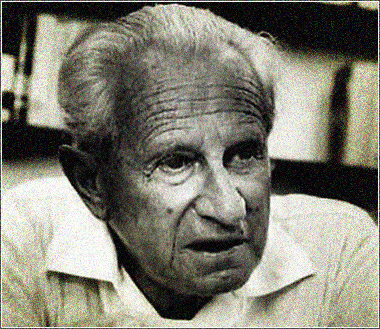Neo-Marxian
Theory
Credits,
references, and bibliography
Critical
Theory and the Emergence of the Culture Industry

(from: www.virb.com/themedia/photos/975549-website no longer available)
The
Frankfurt School (see also) (1923, Institute
for Social Research)
- Superstructure
focus
- Marx and
economics as infrastructural base
- 1930s, 1940s,
and post WWII: Culture
- Dominant
Ideology, Hegemony
- Culture,
as the product of society, and those in control of its production, came
to be seen as relatively independent from traditional capitalists
Culture
industry: increasing domination of society (local
copy)

(from: http://professordvd.typepad.com/my_weblog/2007/10/the-culture-ind.html-website no longer available)
- Mass culture
(radio, magazines, newspapers, movies--now TV and internet)
- New "opiates"
for the masses
- Deflect critical
thought--anesthetizes
- More important
than work (40 hours versus 24/7)
- More insidious--creeps
into consciousness
- At work, domination
tends to be clear. Impact of technology (assembly line) is obvious. Cultural
control is "invisible."
- People tend
to desire more mass culture--we seek out our own domination.
- Pleasant
control
- Lowest
common denominator (B movies, reality TV, soap operas)
- Continual
entertainment--no revolution
- Time factor,
all work and play (with a bit of sleep); no time for critical thought
- "Who
wants to be a millionaire?" (we desire to be like those who oppress
us)
- Consumerism
(and mass consumption)
- Henry
Ford: adequate wage and shorter hours--time and money to spend
- Advertising:
drives consumption--more and more time spent shopping.
- Working
harder and longer--more money to use for consumption. Mounting debt--more
work.
- Less time
for revolution
- Today: dominated
by consumption.
- 24/7/365
- Vacations
as shopping experiences
- Insidious
advertising tailored to consumer interests ("Minority Report")
- Complete
anesthesia?
- Shopping
malls more important than factories: temples of mass culture
- The Hollywood
Blockbuster (after blockbuster, after blockbuster).

Herbert
Marcuse
One-dimensional
society
- Loss of dialectic
between people and social structure.
- Loss of capacity
to think critically.
- We become
wrapped up in consumption rather than "becoming."
- Technology
(at work and at play) comes to control us.
- Technocratic
thinking: efficiency, ends--means (rationalization).
- Nazis
- Assembly-line
work (no ability to think about what we do or the consequences of our
production--and actually come to think of the machine as doing the production;
we become appendages).
- Loss of reason:
ability to assess choices based on human values. Capitalism as rational,
but not reasonable
- Irrationality
of rationality
- Culture
as control rather than human expression
- Abundance,
yet poverty
- Overall pessimism,
though Marcuse had a vision of people taking control of the technology that
serves to control and creating a more human society.
- Yet, "people
have come to love their cages and are eager to fill them with more of the
goodies being churned out by the capitalist system." (2,
p. 111)
Knowledge
Industry (2, p. 110)
- Like the culture
industry
- Education
- Focused on own
interests--expanding influence over society
- Create the technology
and expand technocratic thinking
- Controlled by
technocrats (bureaucrats)
- Dominated by
business, professional schools, and technique, rather than liberal arts
- Rather than
encouraging liberating thought, universities become "student factories:
"Processing as many students as possible in the most efficient way. Universities
come to turn out students in much the same way that factories turn out automobiles
or sausages." (2, p. 110)
From Web
1.0 to Web 2.0: More or
less control? More or less intrusion?
Neo-Marxian
Spatial Analysis: The reproduction of class
relationships
- Henri
Lefebvre on Space (1974/1984. The
Production of Space . Translated by Donald Nicholson-Smith. 1991. Blackwell
Publishing. 2004.) (see this analysis:
from "Not Bored."
Number 30, February 1999).
- spatial
practice: actions that produce and reproduce space.
- representations
of space: space as conceived of by elites ("urban removal").
- representational
spaces: ideas and representation that stem from lived experiences.
- absolute
spaces: natural spaces (green belt, confluence park).
- abstract
space: space produced through theories and ideas of elite (devoid of nature and oppressive).
- differential
space: space that represents interests of all: freedom and nature.
- David
Harvey on Space:
The
Political Economy of Space. (2005) in Low, S. and Smith, N. (eds), The
Politics of Public Space, Routledge, New York). (local
copy)
- "Communist Manifesto" and capitalist expansion; outsourcing, urban rural divide.
- "Spaces
of hope" and utopian struggle.
- Jaret, Charles.
"Recent Neo-Marxist Urban Analysis." Annual Review of Sociology.
Vol. 9, (1983), pp. 499-525. http://www.jstor.org/stable/2946076.
From
Fordism to Post-Fordism
- Fordism: assembly-line
and mass production
- This model
was adopted by many other industries
- By 1970s--need
for change
- Fordism characterized
by:
- Mass production
of homogeneous products ("Any color you want as long as it is black")
- Inflexible
technologies (problems: adapting to change, new models)
- Standardized
work routines
- Increasing
productivity: more goods at lower costs
- deskilling
- Issue
of quality
- Uniform, mass
workers --bureaucratized unions: Big labor versus Big Corporations
- Strikes--uniform
high wages, but no reward for good work
- Homogeneity
in production meant homogeneity in consumption--little differentiation
- Post-Fordism
(past few decades):
- Production
of wide range of specialized items: high in style and quality
- Production
systems--flexible. Short runs and quick changes.
- Flexible
workers
- High levels
of production (still a must), yet trained and skilled workers a necessity--more
demanding work, and better pay.
- Dramatic
decline in unions
- Heterogeneity
of production--heterogeneity of consumption: Sneakerization
- Not clear exactly
when all this came about, or how far the change has gone.
- Short-run
assembly line is still assembly line
- Jobs outside
of factories have come to be more like factories: McDonaldism (or McDonaldization)
- So, "fordism"
remains
The
Modern World-System (another
interesting account)
- Core
- Periphery
- Semiperiphery
See also:
"The modern-world
system is a key concept for a third neo-Marxian theory. Immanuel Wallerstein
coined the term to describe a largely self-contained social system with a
set of boundaries and a definable life span. Wallerstein argues that we live
in a capitalist world-economy that is based on global economic division of labor
and global inequality. Core regions are dominant and exploit the rest of the
world. The periphery is exploited for its raw materials. The semiperiphery is
a residual category encompassing regions between core and periphery."(1)
Weblinks:
Chapter
5 quiz
1.
Much of this page comes from the "Instructor's Manual" to accompany Contemporary
Sociological Theory and Its Classical Roots: The Basics, Second Edition,
George Ritzer, Mcgraw-Hill, 2007 (and 3rd edition, 2010). The Instructor's Manual
was prepared by James Murphy, University of Maryland, College Park and Todd
Stillman, Fayetteville State University. These excerpts are from chapter 5.
2. Ritzer, George. 2007/2010/2013. Contemporary Sociological Theory and Its Classical Roots: The Basics. 2nd/3rd/4th editions. St. Louis: McGraw-Hill

URL: http://www.umsl.edu/~keelr/3210/3210_lectures/neo-marx.html
Owner: Robert O. Keel: rok@umsl.edu
Last Updated:
Thursday, July 9, 2015 4:04 PM
Unless otherwise noted, all pages within the web site http://www.umsl.edu/~keelr/ ©2015 by
Robert O. Keel.
Click here to Report Copyright Problems



![]()